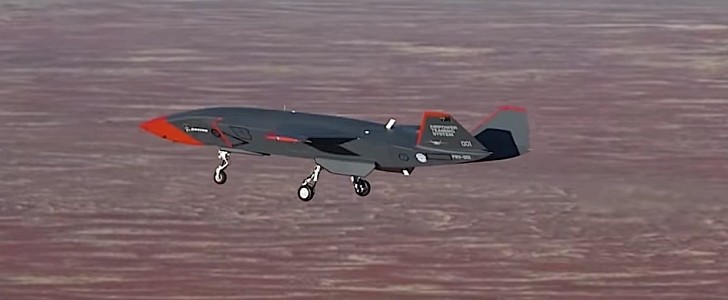Last week, Boeing and the Royal Australian Air Force conducted the first ever test flight of the Loyal Wingman AI-powered drone. Shortly after, an announcement that more such machines will be produced was made.
The Loyal Wingman is a drone that is supposed to come to the aid of either pilots or troops on the ground for surveillance, reconnaissance, or electronic warfare. It is capable of either flying on its own, or under the control of a pilot on the ground.
One important characteristic of this drone is that it can team up with others to perform more complex tasks. Airpower Teaming System is how Boeing calls this, and its realization of course calls for more Loyal Wingmen to be made.
As per an agreement struck with the Australian government last week, Boeing will build an extra three such aircraft, bringing the agreed-upon total to six. The contract is estimated to be worth $115 million and spans for three years, covering the completion of the drone’s design, evolution of payloads, and a sustainment system for the aircraft during operation.
Most importantly, the Boeing team will also focus on giving the plane’s AI more powers.
“In addition to progressing the air vehicle design and support system, we will further develop the aircraft’s mission system including advanced AI decision-making capabilities and new payloads,” said in a statement Dr. Shane Arnott, program director of the Boeing Airpower Teaming System.
“Continued digital engineering and significantly expanded live testing of the system will provide RAAF and Boeing with the ability to jointly take the concept to the next level, activities that are critical for us to rapidly understand how the Airpower Teaming System can be employed in the future battlespace.”
The Loyal Wingman is a 38-feet (11.7 meters) long machine capable of traveling 2,000 nautical miles (2,300 miles or 3,700 km) in a single outing. Most of the other specs are not public.
One important characteristic of this drone is that it can team up with others to perform more complex tasks. Airpower Teaming System is how Boeing calls this, and its realization of course calls for more Loyal Wingmen to be made.
As per an agreement struck with the Australian government last week, Boeing will build an extra three such aircraft, bringing the agreed-upon total to six. The contract is estimated to be worth $115 million and spans for three years, covering the completion of the drone’s design, evolution of payloads, and a sustainment system for the aircraft during operation.
Most importantly, the Boeing team will also focus on giving the plane’s AI more powers.
“In addition to progressing the air vehicle design and support system, we will further develop the aircraft’s mission system including advanced AI decision-making capabilities and new payloads,” said in a statement Dr. Shane Arnott, program director of the Boeing Airpower Teaming System.
“Continued digital engineering and significantly expanded live testing of the system will provide RAAF and Boeing with the ability to jointly take the concept to the next level, activities that are critical for us to rapidly understand how the Airpower Teaming System can be employed in the future battlespace.”
The Loyal Wingman is a 38-feet (11.7 meters) long machine capable of traveling 2,000 nautical miles (2,300 miles or 3,700 km) in a single outing. Most of the other specs are not public.




